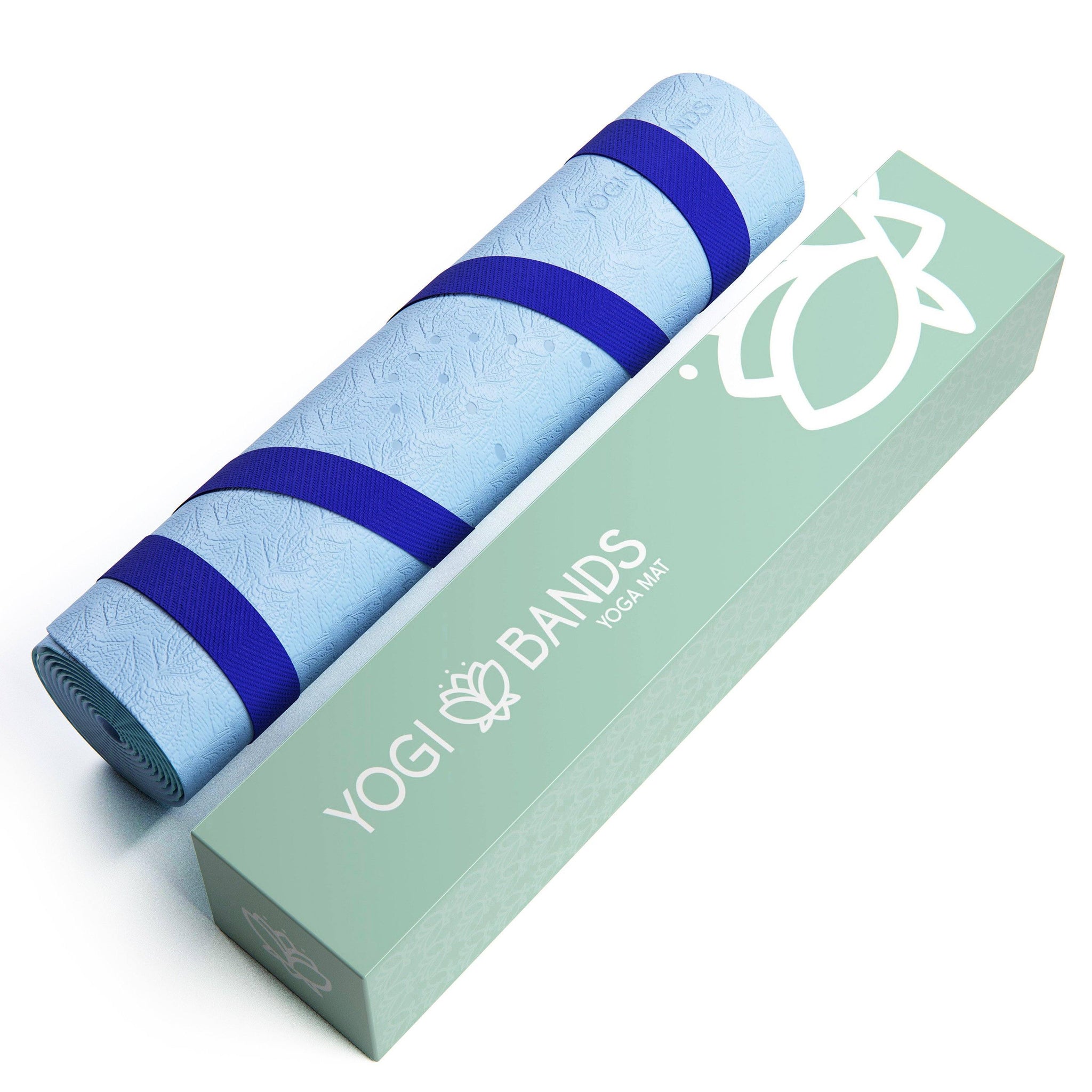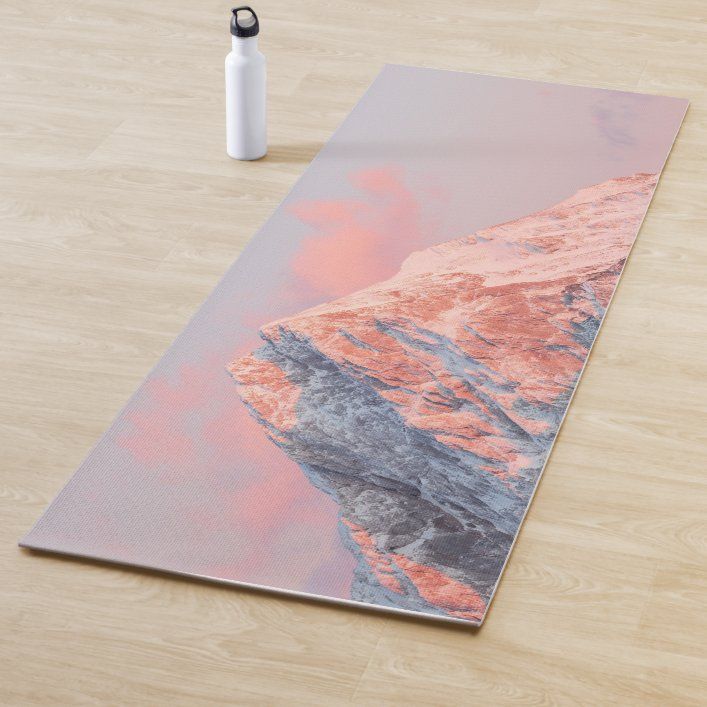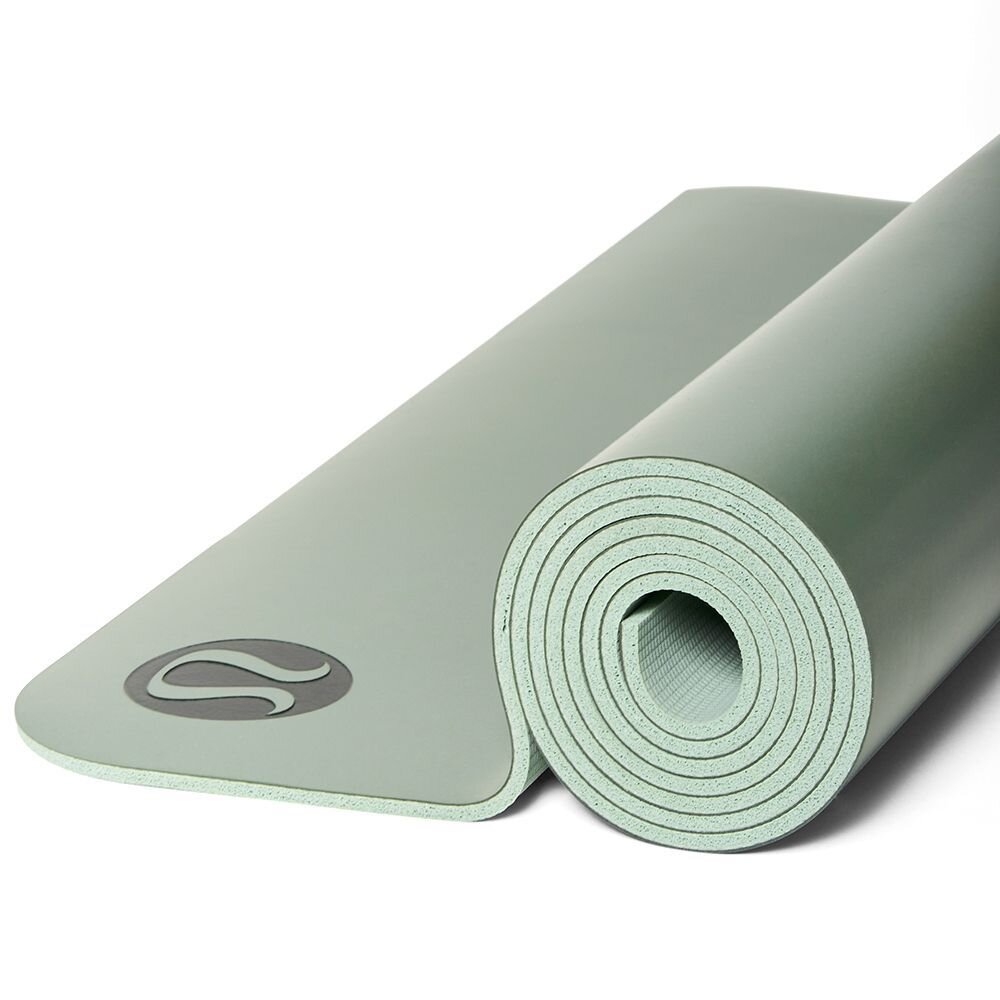Why is my yoga mat slippery? Yoga is a practice that requires focus, balance, and stability. When you’re in the middle of your practice and your yoga mat is slipping all over the place, it can be frustrating and distracting. There are several reasons why your yoga mat might be slippery, and understanding these reasons can help you find a solution to the problem. In this article, we will explore some common reasons why yoga mats become slippery and provide some tips for how to prevent slipping during your practice.

Low-quality materials
One of the most common reasons why yoga mats become slippery is the quality of the materials used to make the mat. Low-quality materials can break down over time, becoming less grippy and more prone to slipping. If your yoga mat is made of a low-quality material, it may be time to invest in a new, higher-quality mat.
Wear and tear
Even high-quality yoga mats can become slippery over time as a result of wear and tear. As you use your mat, the material can break down and lose its grip, making it more prone to slipping. Regular use and exposure to sweat, oils, and dirt can contribute to this wear and tear. If your yoga mat is showing signs of wear and tear, it may be time to replace it.
Sweat and oils
Another common reason why yoga mats become slippery is the buildup of sweat and oils from your body. When you sweat during your practice, the moisture can cause your hands and feet to slip on the mat. Additionally, oils from your skin can transfer to the mat, further reducing its grip. Regular cleaning of your mat can help prevent the buildup of sweat and oils, but if the problem persists, you may need to consider a different cleaning routine or a different type of mat.
Environmental factors
Environmental factors can also contribute to the slipperiness of your yoga mat. For example, practicing yoga in a hot and humid environment can cause excessive sweating, making your mat more prone to slipping. Additionally, practicing on a dusty or dirty floor can transfer debris to your mat, reducing its grip. Consider practicing in a clean, dry environment to help prevent slipping.
Improper maintenance
Proper maintenance of your yoga mat is essential for ensuring its grip and longevity. If you are not cleaning and caring for your mat regularly, it may become more prone to slipping. It’s important to clean your mat after each use to remove sweat, oils, and dirt that can reduce its grip. Additionally, storing your mat in a clean, dry place can help maintain its grip and prevent slipping.

Tips for preventing slipping
There are several steps you can take to prevent your yoga mat from becoming slippery. Here are some tips for maintaining the grip of your mat:
- Invest in a high-quality yoga mat made of durable, grippy materials.
- Clean your mat regularly with a gentle, natural cleaner to remove sweat, oils, and dirt.
- Practice in a clean, dry environment to prevent the transfer of debris to your mat.
- Consider using a yoga towel or grip spray to enhance the grip of your mat during your practice.
- If your mat is showing signs of wear and tear, consider replacing it with a new, high-quality mat.
- Practice proper maintenance by storing your mat in a clean, dry place and cleaning it after each use.
How to choose a yoga mat
Yoga has become increasingly popular in recent years, with people from all walks of life reaping the physical, mental, and emotional benefits of this ancient practice. Whether you are new to yoga or have been practicing for years, having a quality yoga mat is essential for a comfortable and effective practice. With the myriad of options available, it can be overwhelming to choose the right yoga mat that suits your needs.
Understanding the Different Types of Yoga Mats
One of the first steps in choosing the right yoga mat is understanding the different types available. While there are many variations and specialty mats on the market, most yoga mats fall into one of the following categories:
-
PVC mats: These are the most common type of yoga mats and are typically inexpensive and durable. PVC mats are easy to clean and provide good traction, but some people may be concerned about the environmental impact of PVC.
- Rubber mats: Made from natural rubber, these mats are eco-friendly and provide excellent grip. They are also durable and offer good cushioning, making them a popular choice for many yogis.
- TPE mats: Thermoplastic elastomer (TPE) mats are a newer type of yoga mat that is often marketed as an environmentally friendly alternative to PVC mats. TPE mats are lightweight, easy to clean, and offer good cushioning and traction.
- Cotton mats: These natural fiber mats are non-toxic and provide a firm and stable base for your practice. However, they may lack the cushioning and grip of other types of mats.
- Jute mats: Made from the natural fibers of the jute plant, these mats are eco-friendly and provide good traction. However, they may not be as durable as other types of mats.

Consider Your Practice and Preferences
Before you start shopping for a yoga mat, take some time to consider your practice and personal preferences. Ask yourself the following questions:
- What type of yoga do I practice? (e.g., gentle, restorative, hot yoga, vinyasa)
- How often do I practice?
- Do I have any specific requirements or preferences for my yoga mat? (e.g., eco-friendly, extra cushioning, non-slip surface)
- Am I willing to invest in a high-quality mat that will last for years, or am I looking for a budget-friendly option?
By understanding your practice and preferences, you’ll be better equipped to narrow down your options and find a yoga mat that meets your specific needs.
Factors to Consider When Choosing a Yoga Mat
When comparing different yoga mats, there are several factors to consider to ensure you make the right choice for your practice. Here are some key considerations to keep in mind:
Material:
As mentioned earlier, yoga mats come in a variety of materials, each with its own benefits and drawbacks. Consider factors such as sustainability, grip, cushioning, and ease of cleaning when choosing a material that aligns with your values and needs.
Thickness:
The thickness of a yoga mat can significantly impact your comfort and stability during your practice. Thicker mats provide more cushioning for joints and can be especially beneficial for those with sensitive knees or wrists. However, thicker mats may also be heavier and less portable.
Size:
Yoga mats come in various sizes, so it’s essential to choose one that provides enough space for your practice. Standard yoga mats are typically 68 inches long and 24 inches wide, but taller individuals may prefer a longer mat. Additionally, consider the space you have available for storage and transportation when selecting a size.
Texture:
The texture of a yoga mat can affect its grip and comfort. Some mats have a smooth surface, while others feature textured patterns for added traction. Consider whether you prefer a more grippy or smooth surface, and if possible, try out different textures to see which feels best for you.
Eco-friendliness:
If sustainability is important to you, look for yoga mats made from natural and biodegradable materials. Consider factors such as renewable resources, manufacturing processes, and recyclability when choosing an eco-friendly mat.

Conclusion
When your yoga mat is slippery, it can be a frustrating and distracting experience. Understanding the reasons why your mat is slippery and taking steps to prevent slipping can help you maintain focus, balance, and stability during your practice. By investing in a quality mat, practicing proper maintenance, and taking steps to prevent the buildup of sweat and oils, you can enjoy a non-slippery yoga practice for years to come.
